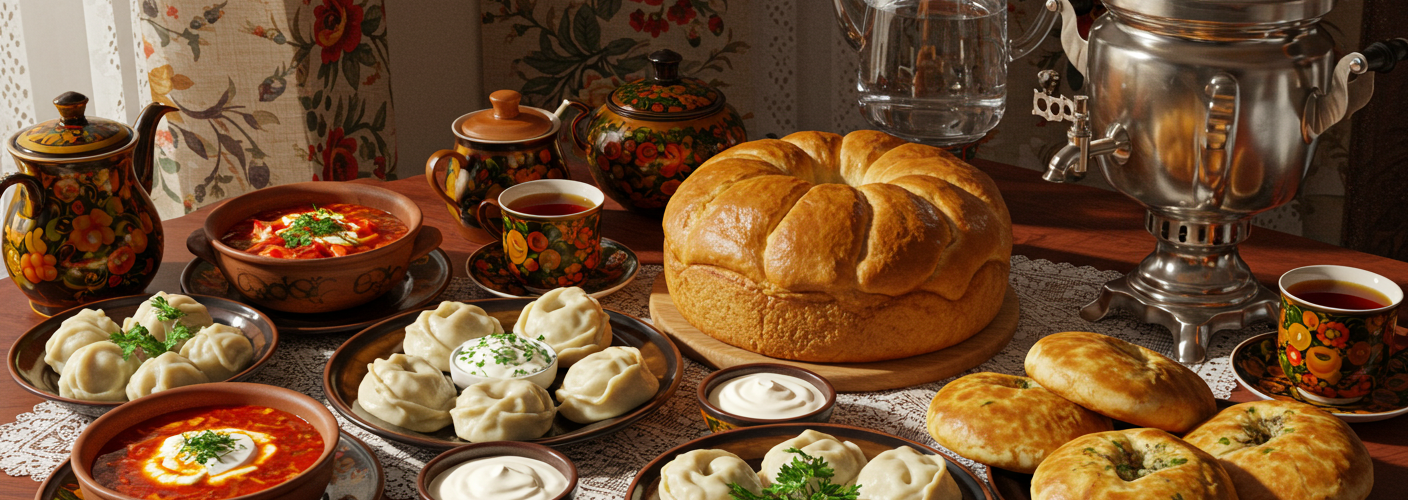Russia, the largest country in the world, boasts a rich culinary heritage that reflects its diverse cultures, climates, and landscapes. From the Arctic tundra to the temperate forests of Siberia, traditional Russian cuisine offers a plethora of flavors and ingredients, each telling its own story. This article explores the unique dishes and ingredients that define Russian food, inspiring food lovers to embark on their own culinary journey across this vast nation.
Iconic Dishes
When thinking of Russian food, several dishes immediately come to mind. Borscht, often considered the national soup, is a vibrant beet soup typically served with sour cream. Originating from Ukraine, it has become a staple in Russian households, often garnished with fresh herbs and accompanied by dark rye bread.
Another beloved dish is Pelmeni, small dumplings filled with minced meat, usually served with sour cream or vinegar. These hearty dumplings are perfect for cold Russian winters and vary widely based on the region. In Siberia, for instance, you might find pelmeni stuffed with game meats, while in the western regions, pork and beef are more prevalent.
Blini, thin pancakes akin to crepes, are another iconic dish, traditionally served with a variety of toppings such as caviar, smoked salmon, or sweetened sour cream. They play a significant role in Russian festivities, especially during Maslenitsa, a week-long celebration marking the end of winter.
Regional Specialties
One of the most fascinating aspects of Russian cuisine is its regional diversity, which is influenced by geography and local ingredients. For instance, in the north, where fish is abundant, Solenka, a sour fish soup, showcases the bounty of the sea. In the Volga region, expect to find Kulesh, a hearty porridge made of millet and often cooked with meat and vegetables.
The Far East of Russia introduces unique flavors, particularly in dishes featuring seafood. Here, you might discover Kamchatka crab, known for its succulent meat, often enjoyed grilled or in salads. The culinary chapter of Eastern Russia is also influenced by its proximity to Japan, leading to the popularity of sushi and sashimi-style dishes.
Ingredients at the Heart of Russian Cuisine
Traditional Russian cooking often celebrates simple, hearty ingredients that have sustained generations. Potatoes, for example, are a cornerstone of many meals, appearing in everything from salads to soups. Likewise, cabbage is a frequent feature, often pickled to create tangy sides that balance richer main courses.
Grains, such as rye and wheat, are foundational, giving rise to the famous Russian breads that accompany meals. Buckwheat is another staple grain in Russian cuisine, known for its nutty flavor and nutritional benefits, often served as a side dish or porridge.
Conclusion
Exploring the culinary landscape of Russia is akin to embarking on a journey through its rich history and cultural tapestry. The abundance of ingredients and diverse cooking techniques reveal the stories and traditions that bind the Russian people together. Whether you’re savoring a bowl of borscht on a chilly day or indulging in the delicate flavors of blini, Russian cuisine offers a warm invitation to experience the heart and soul of this incredible nation.
So, food enthusiasts and adventurers alike, step into your kitchen, gather your ingredients, and let the flavors of Russia inspire your next meal!




Add comment